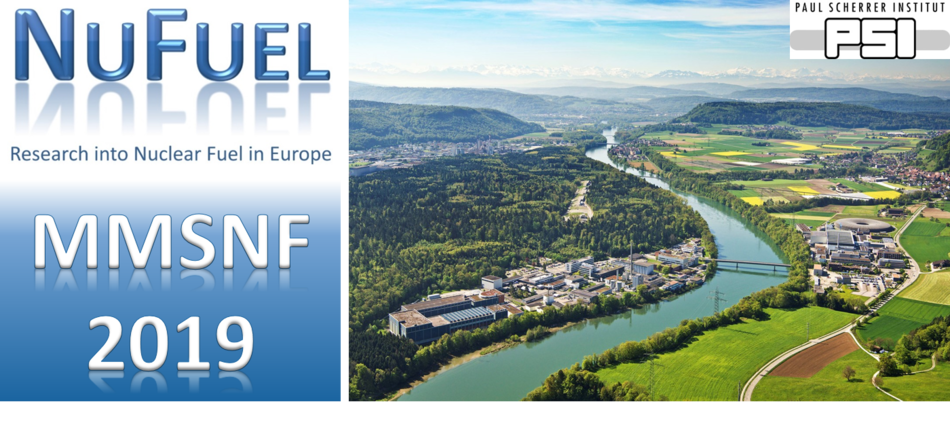Speakers
Description
For the future Sodium-cooled Fast Reactors, uranium-plutonium mixed dioxide (U,Pu)O2-x, with the plutonium content ranging between 19 to 40 mol.%, is foreseen as potential fuel. The pellets have to match various physico-chemical specifications: physical integrity, chemical homogeneity, to be oxygen hypostoichiometric (Oxygen/Metal ratio included in 1.94 and 1.99 range). However, for a Pu content higher than 20 mol.%, and an O/M ratio lower than 1.98, at room temperature, the phase diagram of U-Pu-O system exhibits a miscibility gap domain [1]. The sample is then composed of two phases of same structure but different O/M ratios. The detailed consequences of this demixtion phenomenon, such as formation of cracks and its kinetics has to be fully investigated.
Recently, Talip et al [2] and Elorrieta et al [3] have evidenced that Raman spectroscopy is a promising tool for characterizing (U,Pu)O2 materials. This technic is based on the interaction of a monochromatic light, usually a laser, with the matter. Coupled with a microscope, this technique can be used to determine several physico-chemical properties at the grain scale (~5 µm). For instance, information on crystallographic phases, chemical homogeneity, grain size, and crystal defects can be directly obtained.
UO2, PuO2 and (U,Pu)O2 share the same Fm-3m structure and consequently their Raman active modes are identical, but appear at different wavenumbers in their respective spectra. The main Raman band is the T2g which corresponds to the asymmetrical stretching of the O-O bonds. Its position gives information on the O/M ratio and on the Pu content in (U,Pu)O2±x mixed oxides. Moreover, as showed by Maslova et al [4] using UO2 disc samples, the T2g intensity is directly related to the grain orientation. As the size of the laser beam used is micronic, the observation of porosities and grains is then possible when mapping the surface of the sample, thus revealing its microstructural features.
In the present work, this technique has been extended to (U,Pu)O2.00 fuels. Using a similar approach existing in the literature [4], the (U,Pu)O2 sample microstructure has been studied using µ-Raman imaging technics.
Furthermore, the T2g Raman band mapping on large area of our samples allows us observing µm2 scale heterogeneities in the Pu content.
As this characterization tool was first used on samples with an O/M ratio equal to 2.00, we have extended the method to oxygen hypostoichiometric materials. By using both in-situ and ex-situ thermal treatments with a dedicated device [5] allowing a precise oxygen partial pressure control, various O/M ratios could be achieved. The study of the variations in the (U,Pu)O2 fuel microstructure according to both the Pu content and the O/M ratio is now possible and our first results will be presented.
[1] Sari et al. J. Nucl Materials, 35, 267-77 1970
[2] Z. Talip et al. J. Raman Spectrosc., 48 (5) 765–772, 2017
[3] J. M. Elorrieta et al., J. Nucl. Mater., 495, 484–491, 2017.
[4] O. A. Maslova et al., Mater. Charact., 129, 260–269, 2017.
[5] G. Montagnac et al., Carbon, 54, 68–75, 2013

